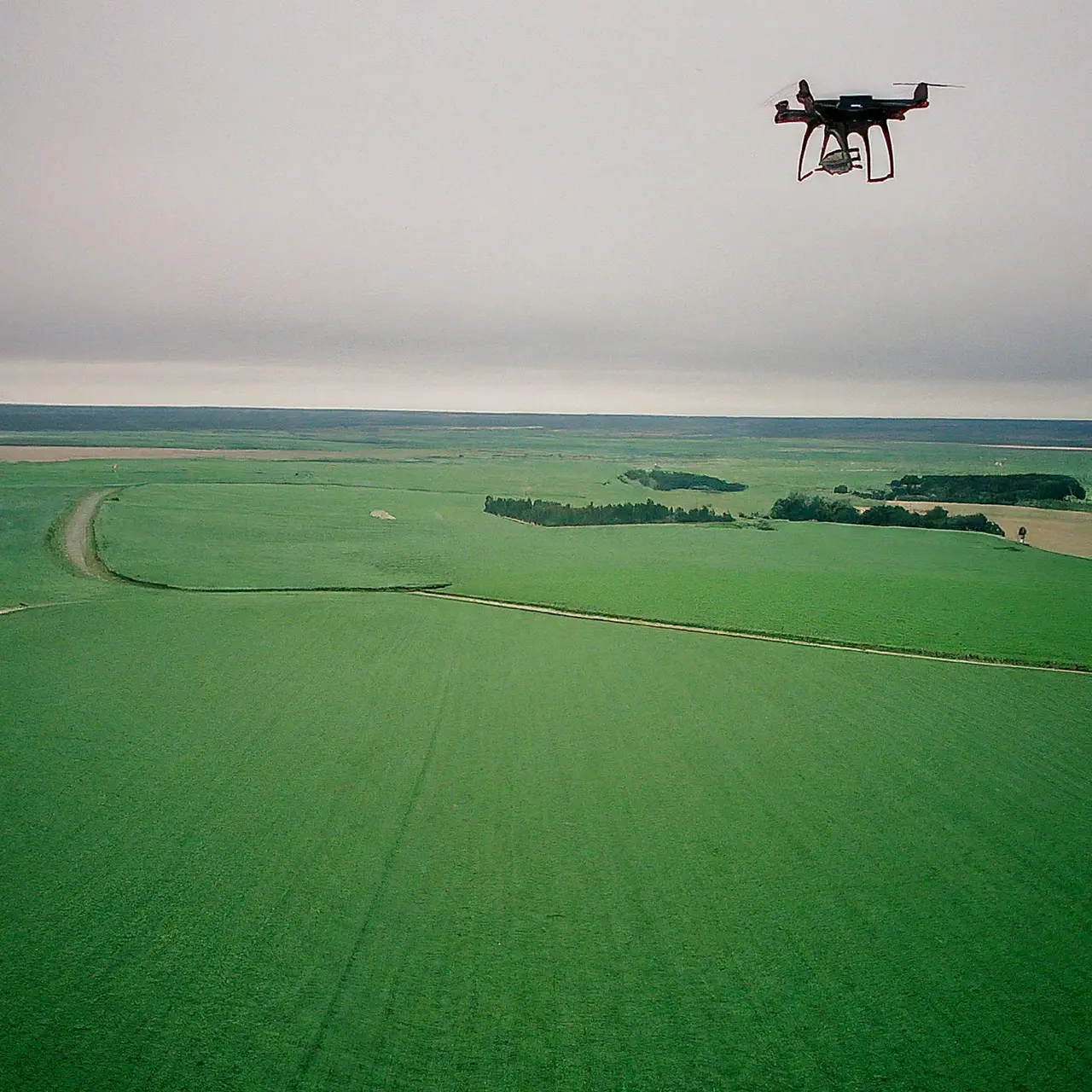
5 Ways Drone-Based Agriculture is Transforming Farming Efficiency
Share
In the vast, ever-evolving field of agriculture, drone-based technology stands out as a beacon of innovation, promising to usher in a new era of farming efficiency. Farmers and agronomists alike are turning their eyes to the sky, exploring how these unmanned aerial vehicles can revolutionize traditional farming practices.
Introduction to Drone-Based Agriculture
Drone-based agriculture is a revolutionary approach that integrates advanced technology into the core of farming operations. This method utilizes unmanned aerial vehicles (UAVs) or drones, equipped with various sensors, to collect data from above. By offering a bird’s eye view of vast agricultural lands, drones enable farmers to make informed decisions, ensuring optimal health for their crops and maximizing yields with unprecedented precision.
The adoption of drones in agriculture marks a significant leap from traditional farming methods, characterized by manual labor and extensive use of resources. These aerial devices streamline the monitoring process, making it possible to cover vast areas quickly, efficiently, and with less environmental footprint. The implications for the agricultural industry are profound, encompassing aspects like crop health assessment, irrigation optimization, and pest management, among others.
Improving Crop Monitoring and Health Assessment
One of the standout capabilities of drone technology in agriculture is its ability to enhance crop monitoring and health assessment. Equipped with high-resolution cameras and sensors, drones provide detailed images and data that help detect issues such as nutrient deficiencies, water stress, and disease before they escalate. This proactive approach allows for targeted interventions, significantly reducing the risk of crop failure and ensuring a healthier yield.
The precision and efficiency of drones extend beyond basic monitoring, enabling the analysis of plant vigor through vegetation indices such as NDVI (Normalized Difference Vegetation Index). By analyzing the light absorption and reflection rates of plants, drones can highlight areas of concern and vitality within a crop field, offering insights that are invisible to the naked eye. This level of detail is instrumental in fine-tuning farming practices for optimal crop health and productivity.
Furthermore, the data collected by drones is invaluable for long-term agricultural planning and management. Historical datasets can be analyzed to identify patterns and trends, empowering farmers with knowledge to anticipate problems and adapt their strategies accordingly. This predictive capability is a cornerstone of modern, data-driven agriculture.
Enhancing Precision Farming Practices
Precision farming is another area where drone technology shines, offering a level of accuracy that was previously unattainable. By delivering precise data on soil health, moisture levels, and crop density, drones play a pivotal role in fine-tuning farming operations. This information allows for the accurate application of fertilizers, pesticides, and water, minimizing waste and reducing the environmental impact.
Moreover, drones contribute to the spatial variability management of crops. They can identify variations within fields, allowing for the implementation of variable rate application (VRA) technologies. This means inputs can be tailored to specific sections of a field, enhancing the overall efficiency of resource use. The result is a more sustainable approach to farming that prioritizes both yield and environmental protection.
Optimizing Irrigation and Water Use Efficiency
Water scarcity is a growing concern in many parts of the world, making the efficient use of water in agriculture more important than ever. Drones equipped with thermal sensors are a game-changer in this respect, enabling the mapping of irrigation patterns and the identification of areas that are either over or under-watered. Such precision in water management not only conserves valuable water resources but also ensures crops receive the optimal amount of moisture needed for growth.
The ability to monitor and adjust irrigation systems in real-time can lead to significant water savings and, by extension, cost reductions. This optimized approach to irrigation also contributes to the prevention of soil erosion and nutrient leaching, further illustrating the environmental benefits of drone-based technology in farming.
Reducing the Environmental Impact of Farming
The environmental impact of conventional farming practices has been a topic of concern for decades. Drones represent a powerful tool in the shift towards more sustainable agriculture by enabling precise and efficient use of inputs such as pesticides, herbicides, and fertilizers. By targeting specific areas that require treatment, drones help minimize run-off into nearby waterways, reducing pollution and protecting ecosystems.
In addition to reducing chemical use, drones also contribute to carbon footprint mitigation. The efficiency and speed of drone technology mean that less fuel-dependent machinery is needed on the fields, which in turn decreases the overall emissions associated with farming operations. This step towards eco-friendly farming practices is critical in the fight against climate change and the push for a sustainable future.
Boosting Harvest Yields and Quality
Beyond the immediate benefits of improved efficiency and reduced environmental impact, drone technology in agriculture plays a key role in enhancing harvest yields and quality. By providing detailed insights into crop health, soil conditions, and resource allocation, drones enable farmers to optimize their practices in ways that directly translate into increased productivity.
The integration of drone data with other agricultural technologies, such as machine learning algorithms and predictive analytics, further amplifies these benefits. Through the analysis of large datasets, patterns and predictions emerge, guiding decisions that lead to healthier crops and more abundant harvests. This level of optimization is revolutionizing the agricultural landscape, setting a new standard for efficiency and effectiveness in farming.
The Future of Farming
As we’ve explored the vast benefits of drone-based agriculture, it’s clear this technology is not just a fleeting trend but a cornerstone of modern farming efficiency. From precise crop monitoring to optimized water use, drones offer a seamless integration of technology and nature, guiding us toward a future where sustainable farming and enhanced food production go hand in hand.

